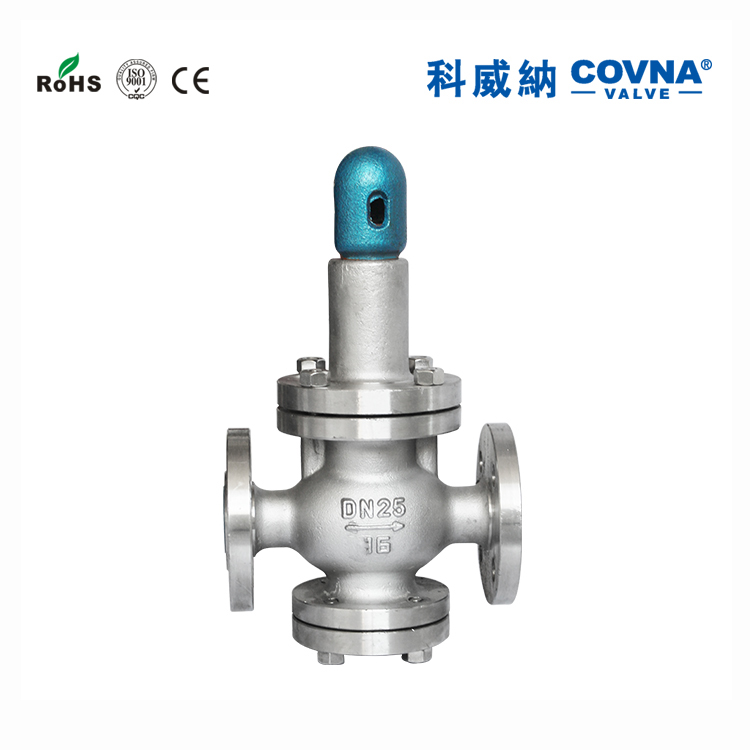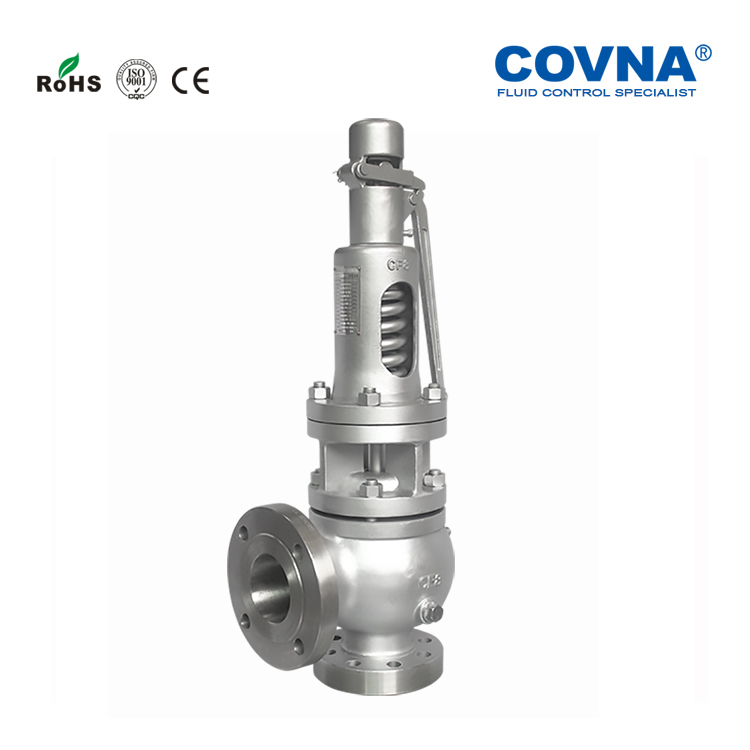Both the pressure reducing valve and the safety valve are valves that protect the pipeline from working properly, but they are not the same product. First of all, their functions are different, and secondly, their working principles are different.
COVNA as a safety valve and pressure relief valve manufacturer, below we will introduce the characteristics of pressure reducing valve and safety valve respectively to help you make a better selection.
If you need any solution or need price, please contact us at sales@covnavalve.com


1. Different Functions
1.1 The pressure reducing valve is a valve variety that reduces the high pressure medium in the system to the low pressure medium and keeps the pressure stable. The characteristic of the pressure reducing valve is to maintain the outlet pressure or temperature value under the condition that the inlet pressure is constantly changing. Within a certain range.
1.2 The pressure relief valve is also a kind of safety valve, which is mainly used in situations where the pressure is too high. When the pressure is greater than the set value, the valve inner plate is pushed to release the pressure in time, and the pressure is reduced to return to the original position, and There is little difference between safety valves. Pressure relief valves mostly refer to liquids, and safety valves mostly refer to gases and steam.
2. The Principle Is Different
2.1 The pressure relief valve is composed of needle valve pressure gauge, main valve, pilot valve and connecting pipe.
It is a kind of hydraulic control valve. The main valve is divided into upper and lower parts by the diaphragm. The lower chamber of the diaphragm is the water flow channel, and the upper chamber is the control chamber, which controls the opening and closing of the main valve flap. The pilot valve itself is a pressure relief valve. It also has a control room and a water flow channel. The opening and closing of the valve flap is controlled by the control room. The needle valve is the throttle valve, which controls the flow of water in the connecting pipe.
2.2 The pressure reducing valve adjusts the flow of the medium by controlling the opening of the opening and closing parts in the valve body to reduce the pressure of the medium. At the same time, the opening of the opening and closing parts is adjusted by the pressure behind the valve to keep the pressure behind the valve at Within a certain range, and spray cooling water into the valve body or behind the valve to reduce the temperature of the medium. This kind of valve is called a pressure reducing valve.
The automatic selection of pressure reducing valve is included. The characteristic of this valve is to keep the outlet pressure and temperature within a certain range when the inlet pressure is constantly changing.
3. The Classification Is Different
3.1 There are two main types of pressure relief valve structures: spring type and lever type.
The spring type means that the seal between the valve clack and the valve seat relies on the force of the spring.
The lever type relies on the force of the lever and the heavy hammer.
With the need for large capacity, there is another impulse pressure relief valve, also called a pilot pressure relief valve, which consists of a main pressure relief valve and an auxiliary valve. When the pressure of the medium in the pipeline exceeds the specified pressure value, the auxiliary valve opens first, the medium enters the main pressure relief valve along the conduit, and the main pressure relief valve is opened to reduce the increased pressure of the medium.
3.2 According to the structure, the pressure reducing valve can be divided into diaphragm type, spring diaphragm type, piston type, lever type and bellows type; according to the number of valve seats, it can be artificial single seat type and double seat type; according to the position of the valve disc, it can be divided It is a positive-acting and a counter-acting.
Pilot-operated pressure reducing valve When the output pressure of the pressure reducing valve is high or the diameter is large, if the pressure is directly adjusted by the pressure regulating spring, the spring stiffness must be too large. When the flow changes, the output pressure fluctuates greatly. The structure size of the valve Will also increase. In order to overcome these shortcomings, a pilot-operated pressure reducing valve can be used. The working principle of the pilot-operated pressure reducing valve is basically the same as that of the direct-acting type.
The pressure regulating gas used in the pilot pressure reducing valve is supplied by a small direct-acting pressure reducing valve. If a small direct-acting pressure reducing valve is installed inside the valve body, it is called an internal pilot pressure reducing valve; if a small direct-acting pressure reducing valve is installed outside the main valve body, it is called an external pilot pressure reducing valve .
Post time: Nov-25-2021




